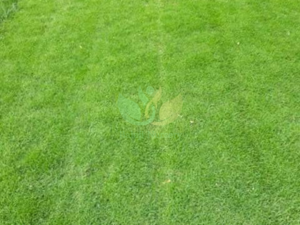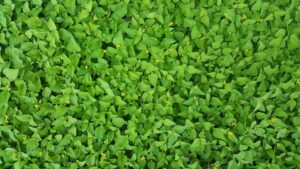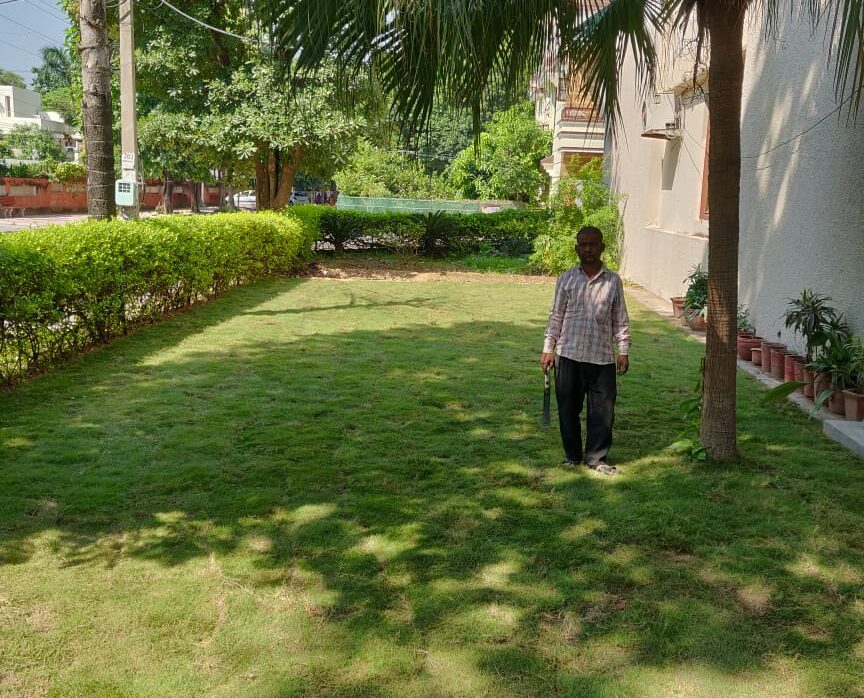Types of Grass Which You Can Plant Near Trees
Types of Grass Which You Can Plant Near Trees
Trees are imposing additions to any landscape, bringing shade, beauty, and a sense of natural awe. But their presence can also provide a dilemma for homeowners who seek a lush, verdant carpet beneath their branches. The battle for sunshine, water, and nutrients can cause regular lawn grasses to suffer in these shadowed places. Fear not, fellow plant aficionados! There are numerous varieties of grass that grow beneath the soft cover of trees, providing a perfect combination of nature’s textures. So, before you surrender yourself to barren stretches, let’s examine some verdant allies appropriate for adorning the region underneath your leafy giants Types of Grass Which You Can Plant Near Trees:
Shade Tolerant Champions:
 Fescues: Fine-bladed and tenacious, fescues including Chewings Fescue and Tall Fescue endure shade and drought, making them suitable for low-traffic areas beneath trees. Bonus: they require less mowing! Shade Bluegrass: A shade-loving relative of Kentucky Bluegrass, this variety delivers a familiar blue-green tint while flourishing in partial shade. Zoysia grass: This low-growing, slow-spreading grass offers good shade tolerance and requires less maintenance. However, it may not be widely available in all places.
Fescues: Fine-bladed and tenacious, fescues including Chewings Fescue and Tall Fescue endure shade and drought, making them suitable for low-traffic areas beneath trees. Bonus: they require less mowing! Shade Bluegrass: A shade-loving relative of Kentucky Bluegrass, this variety delivers a familiar blue-green tint while flourishing in partial shade. Zoysia grass: This low-growing, slow-spreading grass offers good shade tolerance and requires less maintenance. However, it may not be widely available in all places.
Beyond the Grass Patch:
 Groundcovers: Consider replacing typical grass with shade-loving groundcovers like Liriope, Hostas, or Ajuga. These offer varied textures and hues, giving visual appeal and controlling weeds. Wildflower Meadows: Embrace the natural beauty of a wildflower meadow! Native wildflowers like Columbine, Coneflower, and Black-eyed Susan grow in sun-dappled places, attracting pollinators and creating a magnificent habitat.
Groundcovers: Consider replacing typical grass with shade-loving groundcovers like Liriope, Hostas, or Ajuga. These offer varied textures and hues, giving visual appeal and controlling weeds. Wildflower Meadows: Embrace the natural beauty of a wildflower meadow! Native wildflowers like Columbine, Coneflower, and Black-eyed Susan grow in sun-dappled places, attracting pollinators and creating a magnificent habitat.
Remember the essentials:
Identify your tree: Different trees have varied shadow concentrations and root systems. Research your unique tree to discover its light and water demands. Soil preparation: amend the soil with compost or organic matter to increase drainage and nutritional content, especially under shallow-rooted trees. Watering wisely: Water deeply and rarely, aiming for the root zone instead of the surface. Avoid overwatering, since it can harm both the tree and the lawn. Fertilizing: Use a balanced fertilizer suited for your selected grass or groundcover, following the application directions carefully. With the appropriate design and selection, you can create a healthy understory underneath your trees, where lush beauty meets ecological balance. So, embrace the shadows and let your creativity flow!
Bonus Tip: Consider integrating natural grasses suited to your location. They are frequently well-adapted to local circumstances and provide excellent habitat for animals.
I hope this blog article helps you find the appropriate grassy companions for your trees!
Contact us today for inquiries, orders, or expert advice.
Last Updated on 6 days ago by Anjali Mehra Ph.D. in Horticulture (Punjab Agricultural University)
- Why Lawn Grass Fails After Installation (Real Indian Case Studies) - December 25, 2025
- Nilgiri Grass vs Korean Grass – Price, Look & Maintenance Compared - December 23, 2025
- Delhi Pollution & Dust-Proof Lawn Care Guide - December 20, 2025
